
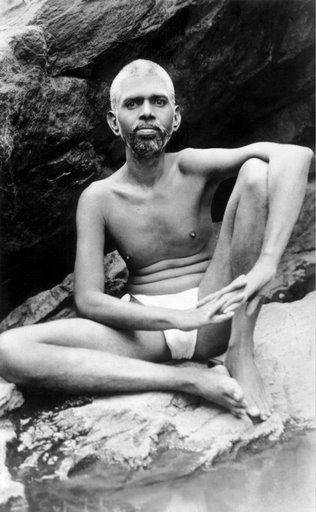
- The Sage of Arunachala
- 1879 Tiruchuzli – Tiruvannamalai 1950
- Who am I, written by Ramana Maharshi;
one of only two writings given by Ramana Maharshi
– who principally taught by silence.
![]()
Spirituality and the human


![]()
 Sri Ramana Maharshi was a self-realised sage of South India. As a boy of sixteen in 1896, he challenged death by a penetrating enquiry into the source of his being. Later hailed as Bhagavan Sri Ramana Maharshi he revealed the direct path of practice of Self-enquiry and awakened mankind to the immense spiritual power of the holy Arunachala Hill, the spiritual heart of the world.
Sri Ramana Maharshi was a self-realised sage of South India. As a boy of sixteen in 1896, he challenged death by a penetrating enquiry into the source of his being. Later hailed as Bhagavan Sri Ramana Maharshi he revealed the direct path of practice of Self-enquiry and awakened mankind to the immense spiritual power of the holy Arunachala Hill, the spiritual heart of the world.
![]()
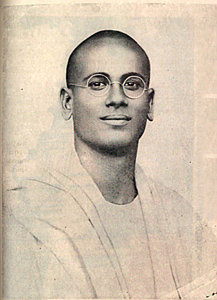 There is a famous shrine town, Trivellore, near Madras. Near there is a smaller village, Kammavaripalayam. Living here was one man by name of Sri Venkatappa Naidu. He married one Subbalakshmi of Parlapalle Village in Gudur Taluk of Nellore District. A male child was born (10.10.1894) named Venkatasubbiah, taking both his parents names. When the child was three years old his father transferred to Pennalurpet. His mother taught him a valuable lesson arising from an argument that carried over from a heated exchange in school. The other boy grew angry to the extent of beating Venkatasubbiah.
There is a famous shrine town, Trivellore, near Madras. Near there is a smaller village, Kammavaripalayam. Living here was one man by name of Sri Venkatappa Naidu. He married one Subbalakshmi of Parlapalle Village in Gudur Taluk of Nellore District. A male child was born (10.10.1894) named Venkatasubbiah, taking both his parents names. When the child was three years old his father transferred to Pennalurpet. His mother taught him a valuable lesson arising from an argument that carried over from a heated exchange in school. The other boy grew angry to the extent of beating Venkatasubbiah.
![]()
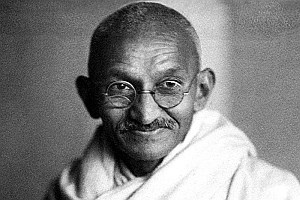
Mohandas Gandhi — also affectionately known as Mahatma Gandhi — led India’s independence movement in the 1930s and ’40s by speaking softly without carrying much of a big stick, facing down the British colonialists with stirring speeches and non-violent protest.
![]()
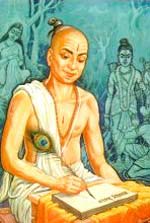 The day being Tulsidas Jayanthi (commemoration of the birth of Tulsidas) we present an important saint of India. (b. 1543?, probably Rajapur, India, d.1623, Varanasi), Tulsidas was an Indian sacred poet whose principal work, the Rama charita-manasa. (“Sacred Lake of the Acts of Rama”), became an extremely popular form of devotional literature which has exercised an abiding influence on the devotional culture of North India.
The day being Tulsidas Jayanthi (commemoration of the birth of Tulsidas) we present an important saint of India. (b. 1543?, probably Rajapur, India, d.1623, Varanasi), Tulsidas was an Indian sacred poet whose principal work, the Rama charita-manasa. (“Sacred Lake of the Acts of Rama”), became an extremely popular form of devotional literature which has exercised an abiding influence on the devotional culture of North India.
![]()
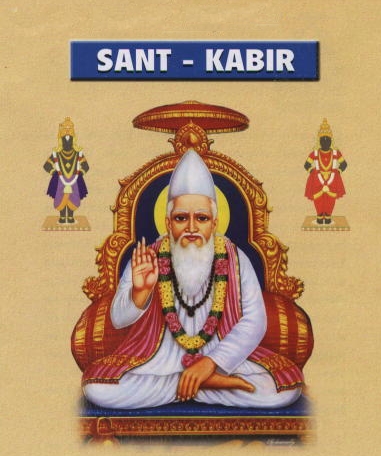
Kabir was a weaver and mystic poet who lived in Benares for 120 years. He was an important influence on the Hindus and Muslims [then called Mohammedans] of his time and also a profound influence on Nanaka Shah (Guru Nanak), the founder of the Sikh religion. Many poems of Kabir can be found in the Guru Granth Sahib, the sacred scriptures that form the Guru of Sikhism.
![]()
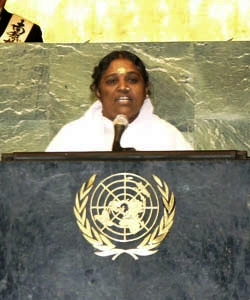
An Address given by Mata Amritanandamayi Devi on the occasion of A GLOBAL PEACE INITIATIVE OF WOMEN RELIGIOUS AND SPIRITUAL LEADERS at Palais des Nations, UN, Geneva 7 October, 2002.
![]()
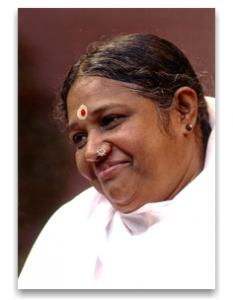 Mata Amritanandamayi Devi, known as Ammachi or Mother (or the Hugging Saint in the world’s media) was born 27 September in a small fishing village in Kerala, South India. Named Sudhamani, she was the third child in family of 8 children. Her early life was punctuated with intense devotion to Lord Krishna, right from very young age.
Mata Amritanandamayi Devi, known as Ammachi or Mother (or the Hugging Saint in the world’s media) was born 27 September in a small fishing village in Kerala, South India. Named Sudhamani, she was the third child in family of 8 children. Her early life was punctuated with intense devotion to Lord Krishna, right from very young age.
![]()
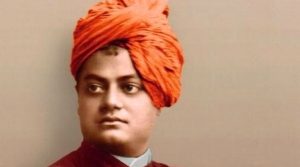
If India were to have patron saints, then perhaps we might say that Swami Vivekananda is the patron saint – or guru – of Inter-religious encounter, or perhaps, in a more modern sense, an advocate for toleration and harmony among the world’s religions. Swami Vivekananda travelled to the Americas and participated in the inaugural Parliament of the World’s Religions in Chicago in 1893. We bring you excerpts from his speech on this occasion (in 2016) of the Birthday of Swami Vivekananda. (Vivekananda Jayanti)
![]()
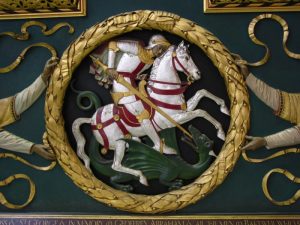 Saint George (AD 275–281 to 23 April 303), according to legend, was a Roman soldier of Greek origin and officer in the Guard of Roman emperor Diocletian, who ordered his death for failing to recant his Christian faith. As a Christian martyr, he later became one of the most venerated saints in Christianity.
Saint George (AD 275–281 to 23 April 303), according to legend, was a Roman soldier of Greek origin and officer in the Guard of Roman emperor Diocletian, who ordered his death for failing to recant his Christian faith. As a Christian martyr, he later became one of the most venerated saints in Christianity.
![]()
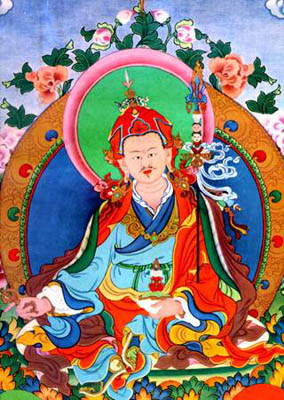
Padmasambhava introduced Buddhist doctrine into Tibet and exorcised its demons. He is one of the historically identifiable founders of Tibetan Buddhism and of the Lamas, as Tibetan Buddhist monks are generally called.
Padmasamhhava (literally, born of the Lotus) was born in the extreme north-west of India, now Pakistan. He was already an accredited Tantric master at the Nalanda university when he was called to Tibet by King Thn-Srong Detsan (740-786). Buddhism had doubtlessly arrived in Tibet one century before, during the reign of the first king, Tri-srong Detsan (c.610-649) who had married two Buddhist princesses, one from Nepal, and the other from China.
![]()
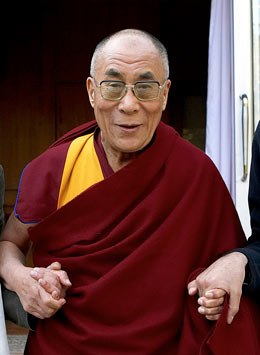
Born: 1935 Residence: Dharamsala, India Birth Name: Tenzin Gyatso
Dalai Lama: “teacher whose wisdom is as great as the ocean”; an honorary title bestowed by the Mongolian prince Altan Khan on the third head of the Gelukpa school in 1578. This close connection with Mongolia brought the school of Tsongkhapa into a position of political preeminence, which with the fifth dalai lama (1617-82) was consolidated into rulership over all of Tibet. Since this time, the Dalai Lama has been regarded as an incarnation of Avalokiteshvara, and the Panchen Lama has been venerated as his spiritual representative. Each Dalai Lama is considered a reincarnation (tulku) of the preceding Dalai Lamas. The Dalai Lamas not only fulfilled their role as heads of state. Among them are also great scholars and poets filled with joie de vivre, like the sixth Dalai Lama. The fourteenth Dalai
Lama, in exile since 1959, combines in his person a spiritual and political authority that is still binding for the Tibetan people.
![]()
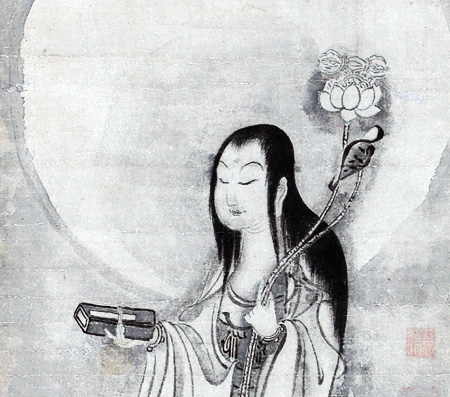

![]()
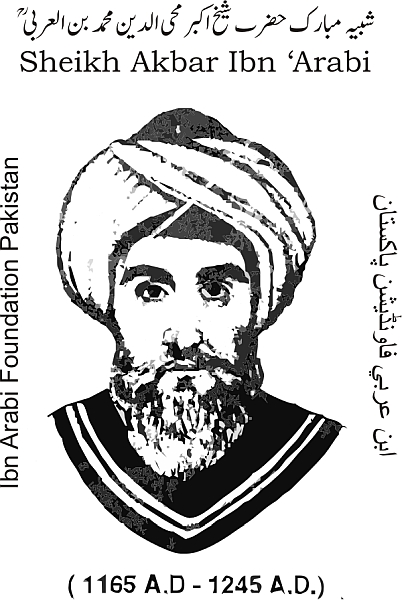
Muhyi al-Din Ibn al-Arabi was born in Murcia into a very pious and cultured milieu. When he was seven, he and his family moved to Seville, the capital of the Almohades Empire which extended all over North Africa. At 16, having studied with Andalusian spiritual leaders, he‘ entered on the path’. He was so cultured that at an early age he was awarded an important administrative post; it was also at this time that he met and married a young woman whom he considered to be the spiritual ideal. But a grave illness which brought with it powerful visions led him to give up his career and his possessions in order to practise asceticism in strict seclusion. Several long years of pilgrimage followed, during which Ibn’Arabi met the greatest mystics in Spain and the Mahgreb, where he spent some time before a vision compelled him to go to the East. In 1201-02 he travelled to Cairo, Jerusalem, and finally to Mecca, where he was welcomed into the home of an eminent Persian sheikh and his sister.
![]()
The following brief description of the path that the devotee travels in his journey to Jannah (Paradise) is taken from the introduction of Imam al-Ghazali’s Minhaj al-‘Abidin ila Jannati Rabb al-‘Alamin (The Path that the Devotee has to traverse in order to reach the Garden of the Lord of the Universe). This path to Jannah is no more than the devotee’s actual worship and servitude of Allah, the Almighty. However, in undertaking this journey the devotee is confronted with Seven Obstacles which he needs to overcome if he is to accomplish his goal and reach his destination. These Seven Obstacles are:
![]()